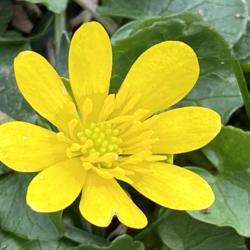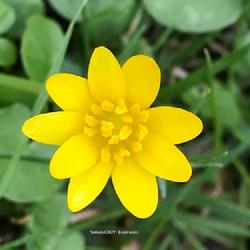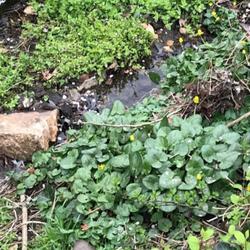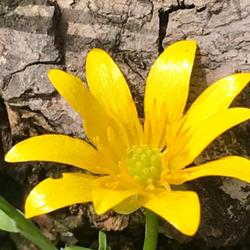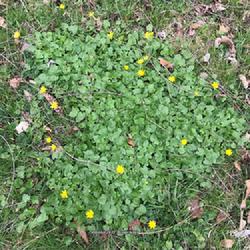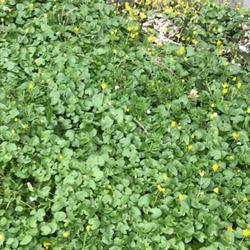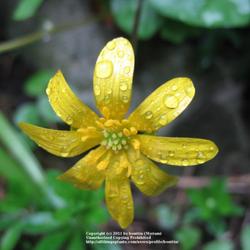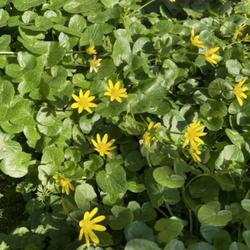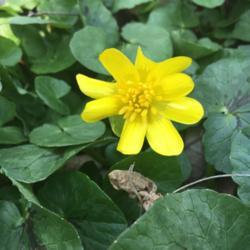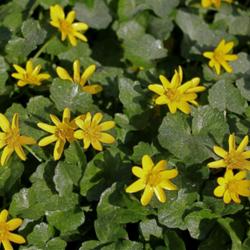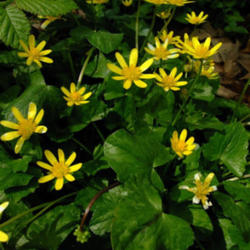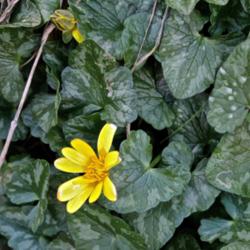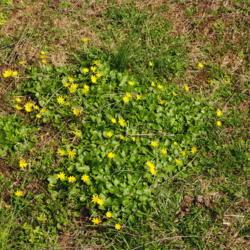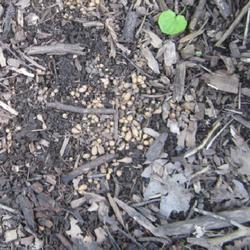Posted by
ILPARW (southeast Pennsylvania - Zone 6b) on Mar 29, 2020 11:16 AM concerning plant:
This low growing member of the Buttercup Family is native to Europe, far North Africa, and a little of western Asia. It is a very prolific, invasive plant in eastern North America and the Pacific Northwest. It favors sites of wet or damp soils, but can grow perfectly fine in average, mesic soil, including in lawns. It does not like really dry or acidic soils. It grows in full sun or shade. It is sometimes mistaken to be the Cowslip Marsh-Marigold that is a larger plant about 8 to 24 inches high with 5-petal flowers. The Lesser Celandine is about 2 to 6 inches high with 8-petal flowers. It begins growth in winter and blooms in early spring. When the days get long and the temperatures warm in May, it goes into a 6 to 8 month dormancy and disappears from sight. Its juice can cause rashes and it is toxic to eat for humans and most mammals, including livestock. If someone really knows what they are doing, it has some limited medical use. It forms little tubers in the ground and is hard to eradicate. A small patch can be carefully dug out with all the tubers, but several applications of glycosphate herbicide in winter and spring when it is growing can get it, and be prepared for some surviving the next year. It competes with native spring ephemeral flowers. Canadian Ginger and Golden Groundsel are some plants that can overcome it. I know of one site along a shady creek where lots of Jewelweed (Impatiens pallida) comes up after the celandine blooms.



